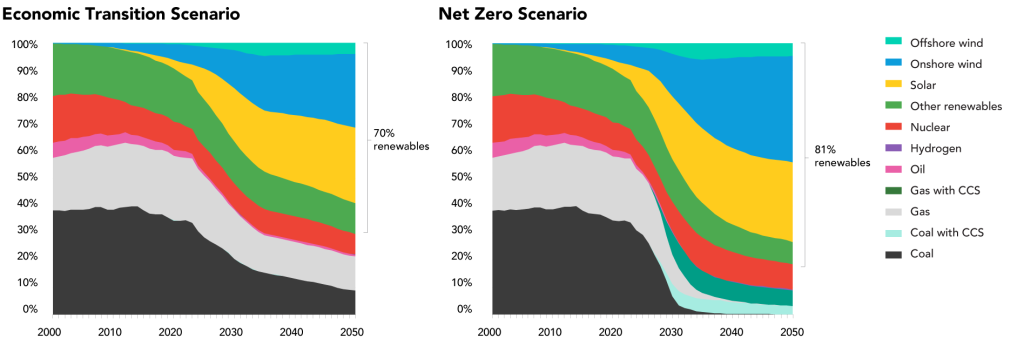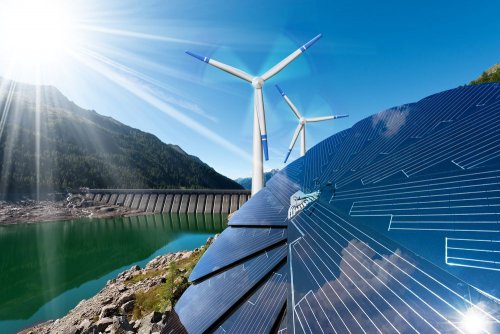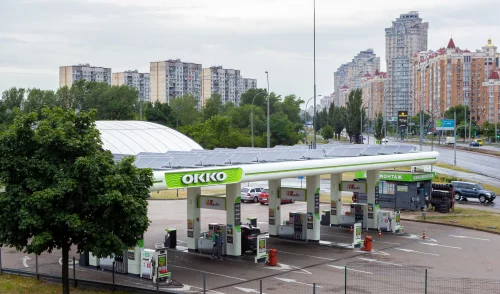The Bloomberg NEF research organization has published a new energy outlook, the New Energy Outlook 2024. In it, it outlined 2 updated climate scenarios to achieve the main goal of the Paris Agreement: the zero emissions scenario (NZS) and the economic transition baмseline (ETS).
Bloomberg NEF has published a 250-page study based on 18 million data points on its website.
The research organization divided its analysis into two scenarios:
- Economic Transition Scenario (ETS) implies that governments rely on the implementation of clean technologies only where they are economically competitive. Analysts predict that this path will lead the world to a 2.6°C warming since pre-industrial times. It is still slightly better than what governments are currently committing to, but will lead to catastrophic climate consequences as the world misses the 2°C target set by the Paris Agreement.
- Net Zero Scenario (NZS) suggests that governments will double the use of emission-reduction technologies to achieve net zero by 2050. If the world follows this path, it may still fall short of the more ambitious Paris target of keeping warming below 1.5°C – instead moving closer to 1.75°C. However, this path can still help avoid irreversible climate damage.
A comparison of CO2 emission reductions under these two scenarios was presented graphically by Bloomberg NEF with the help of graphs:

The production of electricity by technology/type of fuel in comparison will look as follows:

According to the ETS, RES will account for 51% of global electricity production by 2030 and 70% (16 TW) by 2050.
The NZS predicts that demand for oil, gas and coal will peak as early as next year, before falling sharply after that. Such a turn will contribute to the rapid expansion of clean energy technologies, in particular, the tripling of RES capacities by 2030 and their achievement of a total capacity of 31 TW by 2050.
At the same time, analysts warn that such a large-scale increase in RES generation will require modernization of power grids to ensure balancing flexibility. One common problem for all countries is network bandwidth. It is expected to grow to 111 million km in length by 2050.
In addition, a quarter of the 31 TW of installed RES capacity will be needed to power the nearly 3.8 TW of electrolysis capacity expected to be operational by 2050.
Investments required for the ETS scenario are $181 trillion by 2050, and $215 trillion by 2050 for the NZS.
In their review, the experts noted that in order to achieve zero emissions by 2050, it is necessary to scale 9 of the following key technologies:
- RES;
- electric mobility;
- systems of energy accumulation and storage;
- carbon capture and storage technologies;
- "green" hydrogen;
- "green" fuel;
- heat pumps;
- electrical networks;
- nuclear energy.
Earlier EcoPolitic told about the fact that in Ukraine for almost half a year nothing is known about the renewal of the Nationally Determined Contribution to the Paris Agreement.
We also reported that the international court recognized the inadequacy of the Paris Agreement to combat global warming.





